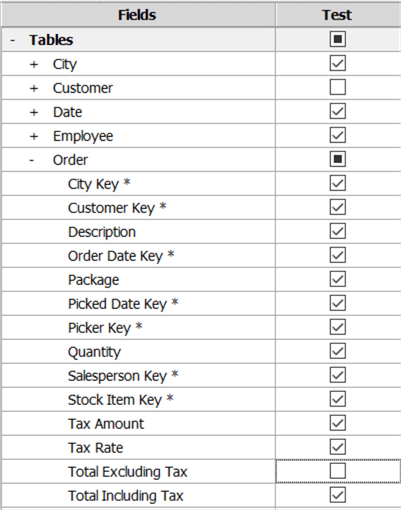

You should note that TOM can also be used in scenarios that do not involve the XMLA endpoint such as
#Annotations meaning tabular object modle code#
Write the C# code required to create and modify datasets while they're running in the Power BI Service.
#Annotations meaning tabular object modle how to#
The focus of this article is getting started with TOM and demonstrating how to Behind the scenes, TOM translates the readĪnd write operations in your code into HTTP requests executed against the XMLA Write code in terms of a intuitive programming model that includes classes like Provides an abstract layer on top of the XMLA endpoint. NET application toĬreate and modify datasets directly in the Power BI Service. NET developer, there's great news in that you can now write C# code in a. SQL Server Management Studio and the Tabular Editor. A growing number of Power BI professionals have found that they canĬreate, view and manage Power BI datasets using pre-exisitng tools that use the XMLA protocol such as Running in the Power BI Service and to directly program against Power BI datasets. The XMLA endpoint is significant to developers because it provides new APIs to interact with the Analysis Services engine Import Endpoint for Power BI Premium datasets reached general availability in

Let’s define a Key aspect for our new Dashboard entity. Each field in the key struct willīe converted into a single part of the Urn's tuple, in the order they are defined. This struct will be used to generate a serialized string key, represented by an Urn. These fields were previously part of the Urn Java Class that was defined for each entity. For those familiar with DataHub’s legacy architecture, Step 1: Define the Entity Key Aspect Ī key represents the fields that uniquely identify the entity. The existing "Dashboard" entity for purposes of illustration. Now we'll walk through the steps required to create, ingest, and view your extensions to the metadata model. A list of specified Aspects, groups of related attributes that are attached to an entity.A Key Aspect: Uniquely identifies an instance of an entity,.If you want to extend an existing Entity, you can skip directly to Step 3.Īt a high level, an entity is made up of: This guide will outline what the experience of adding a new Entity should look like through a real example of adding theĭashboard Entity. We will refer to the two options as the open-source fork and custom repository approaches in the rest of the document below. We are working hard to move the majority of model extension use-cases to no-code / low-code pathways to ensure that you can extend the core metadata model without having to maintain a custom fork of DataHub. The red lines represent higher risk of conflicts in the future. The green lines represent pathways that will lead to lesser friction for you to maintain your code long term. Use the diagram below to understand how to make this decision. To fork or not to fork? Īn important question that will arise once you've decided to extend the metadata model is whether you need to fork the main repo or not. These two concepts prior to making changes. Unsure if you need toĬreate a new entity or add an aspect to an existing entity? Read metadata-model to understand You can extend the metadata model by either creating a new Entity or extending an existing one.


 0 kommentar(er)
0 kommentar(er)
